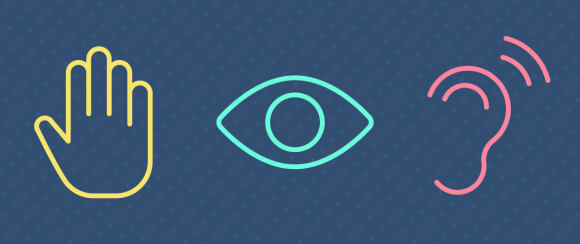Web Accessibility is an important consideration for anyone setting up an online questionnaire, website or app because being able to use the internet is now considered a human right.
That means you must ensure anyone is able to access and engage with your content.
The internet has revolutionised modern life. From social media to e-commerce, it affects both our social and our spending habits.
But what if a disability meant you were unable to get online at all?
The World Health Organisation estimates that 15% of the world’s population lives with some form of disability, leaving many people struggling to use the internet.
Fortunately, awareness of Web Accessibility is on the rise.
Governments around the world are introducing legislation to ensure everyone is capable of accessing certain aspects of the digital realm.
So what does this mean for businesses and website owners?
Let’s break down the key points you need to know.
What does Web Accessibility mean?
Web Accessibility is the principle that internet can be used and accessed by anyone; regardless of disability, age or the environment they’re in. This means that websites, online forms, online software, tools and technology must be useable by people with auditory, cognitive, neurological, physical, speech and visual disabilities.
Digital content and design needs to be clear enough that most people can access it or adapt it to suit their needs. For example, they may use a screen reader, speech recognition software, a screen magnifier or Braille display.
To account for those without access to sound cards and audio equipment, transcripts of videos must also be available.
Why is Web Accessibility important?
Web Accessibility is important from an equal opportunities perspective as well as commercially.
From September 2020, it will also become a legal requirement for public sector services in the UK. In the US, federal, state and local government websites have to adhere to Section 508 of the Rehabilitation Act.
Access to information and communication technologies is defined as a basic human right by the United Nations, but it also means businesses can be losing out on profits by not making their websites accessible to everyone.
The internet is also a source of news and social interactions, meaning those without access can feel isolated.
In addition, the online spending power of disabled people in the UK is estimated to be as high as £16 billion a year.
This means people and organisations are both losing out if the web is inaccessible.
Another benefit to accessibility is the way search engines like Google will perceive your website.
The more a user interacts with your website, the more likely you are to rank highly in search results. If someone clicks off your website without any meaningful engagement, search engines will not identify your website as being one that fulfils the need of the user. This means you will likely feature further down in search results and be found by fewer people.
This will decrease your visibility and lead to fewer visitors.
Why is Web Accessibility important for survey design?
Web Accessibility is important for survey and questionnaire design to ensure everyone is capable of answering questions and having their say.
There are more than 12 million disabled people in the UK, so making your surveys accessible is important for capturing the views of a wider audience.
This will lead to improved response rates and, depending on the survey, can identify areas that need critical improvement.
Without accessible surveys, the viewpoints of a large portion of the population can struggle to be heard.
There’s a lot to consider. Take emoji responses, for example.
Survey creators often use sad, neutral and happy faces as answer options for people to show their satisfaction levels. However, if your survey is aimed at people with learning disabilities, you must take into account whether they can recognise the meanings behind each expression.
If not, this can lead to inaccurate responses, bad data and excluding people from truly having their say.
The way around this is to offer alternate survey methods, such as face-to-face or traditional question and answers.
Web Accessibility principles
To get started with Web Accessibility, there are some fundamental principles that should be considered whenever you’re designing questionnaires, websites or creating online content:
- Include text alternatives for non-text content such as images
- Make all content easy to see
– don’t rely on colour to convey information
– ensure foreground and background colours are sufficiently contrasting
– account for resizing text up to 400% - Ensure all functionality on the page can be accessed by a keyboard
- Help users avoid mistakes – use descriptive instructions, error messages and suggestions for correction
For more background and guidance on how to make surveys created using Snap Survey Software accessible, read our Accessibility Statement.
Web Accessibility is essentially about serving a user or customer. For more information on keeping your customers happy, read our blog on The True Cost of Poor Customer Service



